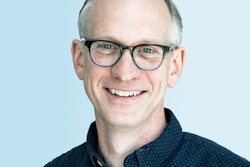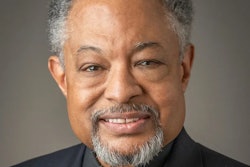Dallas Barbers Assist in Efforts to Curb Hypertension RatesDALLAS
Dallas barbers are helping physicians cut high blood pressure among African American men, the group with the highest rate of uncontrolled hypertension in the United States.
A program started at two Dallas barbershops by researchers at UT Southwestern Medical Center at Dallas is designed to improve the men’s awareness, treatment and control of high blood pressure.
Funded by a $50,000 regional community grant from Aetna Foundation and a $43,000 research grant from Pfizer, Inc., the 10-month program is a spin-off of the Dallas Heart Study, a landmark project led by UT Southwestern doctors, nurses and a professional field staff that involves more than 6,000 Dallas County residents. The five-year heart study is funded by a grant from the Donald W. Reynolds Foundation.
“Early analysis of data from the Dallas Heart Study indicates that African American men had the highest rate of uncontrolled hypertension. That is why we are focusing on this group first,” said Dr. Ron Victor, chief of hypertension at UT Southwestern and principal investigator of the study.
“Our initial work shows that barbershops are an effective setting to detect high blood pressure in African American men and to make appropriate medical referrals. Now the goal is to determine if this new program can be self-sustaining by turning the primary responsibility over to barbers,” Victor said.
The barbers, trained to become blood-pressure specialists, already have started recording their customers’ blood pressure using automated devices. They are identifying customers with untreated hypertension and referring them to medical care.
The goal is to make blood pressure measurement and education a routine part of the service provided in the barbershop, Victor said.
“The remarkable long-term patronage and high frequency of haircut visits makes the barbershop an excellent setting for detection and long-term medical follow-up of hypertension,” Victor said. “Many conventional public health programs designed to improve hypertension control rates have produced disappointing results. We need to go outside the traditional health care setting to find large numbers of African American men with undetected and untreated hypertension.”
In the United States, nearly 50 million people have high blood pressure. Among African Americans, the disease is more common, develops at a younger age, is more severe and is a leading cause of early disability and death from heart attack, stroke, heart failure and kidney failure.
Victor said this innovative strategy of using barbershops to improve hypertension control in African American men may help physicians reach the goal set by the U.S. Department of Health and Human Services to control high blood pressure in at least 50 percent of affected individuals in this country and reduce ethnic disparities in cardiovascular death rates by the year 2010. Currently, less than 15 percent of African American men with hypertension have their blood pressure under control.
© Copyright 2005 by DiverseEducation.com





















